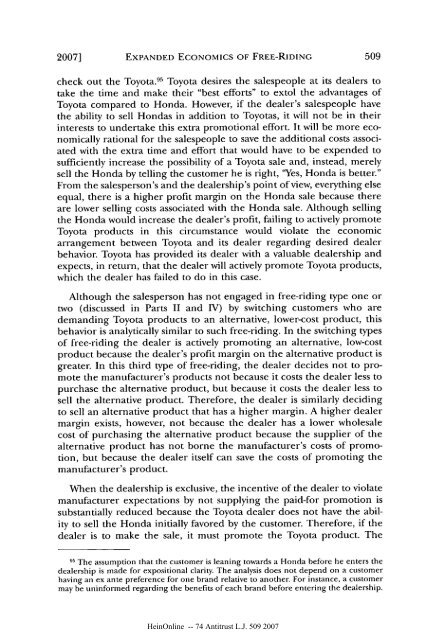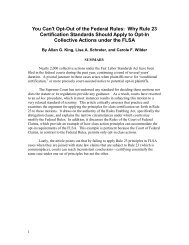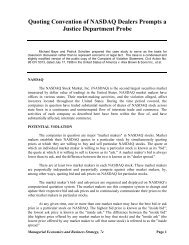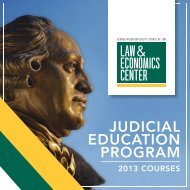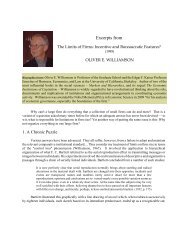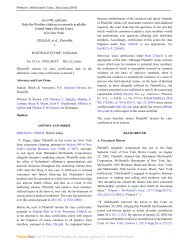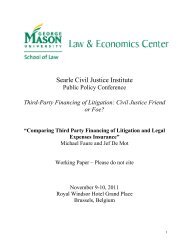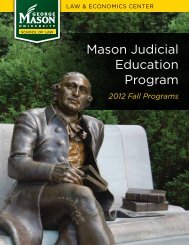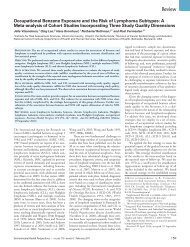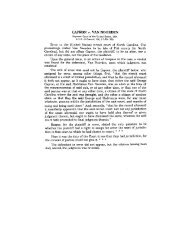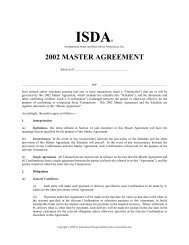Klein and Lerner, âThe Expanded Economics of Free-Riding: How ...
Klein and Lerner, âThe Expanded Economics of Free-Riding: How ...
Klein and Lerner, âThe Expanded Economics of Free-Riding: How ...
Create successful ePaper yourself
Turn your PDF publications into a flip-book with our unique Google optimized e-Paper software.
2007]EXPANDED ECONOMICS OF FREE-RIDINGcheck out the Toyota. 95 Toyota desires the salespeople at its dealers totake the time <strong>and</strong> make their "best efforts" to extol the advantages <strong>of</strong>Toyota compared to Honda. <strong>How</strong>ever, if the dealer's salespeople havethe ability to sell Hondas in addition to Toyotas, it will not be in theirinterests to undertake this extra promotional effort. It will be more economicallyrational for the salespeople to save the additional costs associatedwith the extra time <strong>and</strong> effort that would have to be expended tosufficiently increase the possibility <strong>of</strong> a Toyota sale <strong>and</strong>, instead, merelysell the Honda by telling the customer he is right, '"Yes, Honda is better."From the salesperson's <strong>and</strong> the dealership's point <strong>of</strong> view, everything elseequal, there is a higher pr<strong>of</strong>it margin on the Honda sale because thereare lower selling costs associated with the Honda sale. Although sellingthe Honda would increase the dealer's pr<strong>of</strong>it, failing to actively promoteToyota products in this circumstance would violate the economicarrangement between Toyota <strong>and</strong> its dealer regarding desired dealerbehavior. Toyota has provided its dealer with a valuable dealership <strong>and</strong>expects, in return, that the dealer will actively promote Toyota products,which the dealer has failed to do in this case.Although the salesperson has not engaged in free-riding type one ortwo (discussed in Parts II <strong>and</strong> IV) by switching customers who aredem<strong>and</strong>ing Toyota products to an alternative, lower-cost product, thisbehavior is analytically similar to such free-riding. In the switching types<strong>of</strong> free-riding the dealer is actively promoting an alternative, low-costproduct because the dealer's pr<strong>of</strong>it margin on the alternative product isgreater. In this third type <strong>of</strong> free-riding, the dealer decides not to promotethe manufacturer's products not because it costs the dealer less topurchase the alternative product, but because it costs the dealer less tosell the alternative product. Therefore, the dealer is similarly decidingto sell an alternative product that has a higher margin. A higher dealermargin exists, however, not because the dealer has a lower wholesalecost <strong>of</strong> purchasing the alternative product because the supplier <strong>of</strong> thealternative product has not borne the manufacturer's costs <strong>of</strong> promotion,but because the dealer itself can save the costs <strong>of</strong> promoting themanufacturer's product.When the dealership is exclusive, the incentive <strong>of</strong> the dealer to violatemanufacturer expectations by not supplying the paid-for promotion issubstantially reduced because the Toyota dealer does not have the abilityto sell the Honda initially favored by the customer. Therefore, if thedealer is to make the sale, it must promote the Toyota product. The95The assumption that the customer is leaning towards a Honda before he enters thedealership is made for expositional clarity. The analysis does not depend on a customerhaving an ex ante preference for one br<strong>and</strong> relative to another. For instance, a customermay be uninformed regarding the benefits <strong>of</strong> each br<strong>and</strong> before entering the dealership.HeinOnline -- 74 Antitrust L.J. 509 2007


